There can be several causes of tooth discoloration, and before we list the typical reasons, let us understand the basics of tooth morphology some tips for whitening teeth naturally at home. Teeth comprise three layers: enamel, dentin, and pulp. The enamel is the white outermost hard layer, and the second yellow layer, called dentin, lies underneath it.
What causes tooth discoloration?
The teeth wear with age, and the enamel erodes, exposing the yellow dentin. This age-related yellowish discoloration can’t be whitened and needs other measures to manage them.
However, the teeth may appear yellow or darkly stained due to plaque buildup, or the consumption of specific food items that stain the teeth. That can be managed with cleaning and whitening methods.
Common causes of discoloured teeth
- Excessive consumption of certain food items like tea and coffee
- Chewing tobacco
- Smoking
- Age-related changes
- Side effects of certain medicines or mouthwashes
- Poor oral hygiene
- Excessive consumption of fluoride
- Trauma or direct injury
The information below will briefly discuss how to whiten your teeth at home and give tips to keep your teeth white. So without further adieu, let’s get started.
How to make your teeth white at home?
1. Oil pulling

Oil pulling is a traditional way of removing the bacteria that can potentially deposit onto the teeth as plaque leading to yellowish discoloration. It is one of the safest techniques for whitening teeth naturally at home. It involves swishing coconut oil and pulling it through all your teeth. Continue the practice for 10-15 mins daily for better results.
Coconut oil is the preferred choice as it tastes well and has lauric acid tested to reduce gum inflammation by killing bacteria. Oil pulling is considered safe even if done daily as it does not erode the enamel and cause teeth sensitivity.
Avoid touching oil on the back of your throat, and do not swallow the oil. Oil pulling does not directly affect teeth whitening, but it plays an essential role indirectly by decreasing the accumulation of plaque, which can help with teeth whitening naturally. According to ancient ayurveda, oil pulling has been proven to prevent more than 30 different diseases. It can also prevent bad breath and fungal infection. So it deserves a try, right guys?
2. Brushing with baking soda
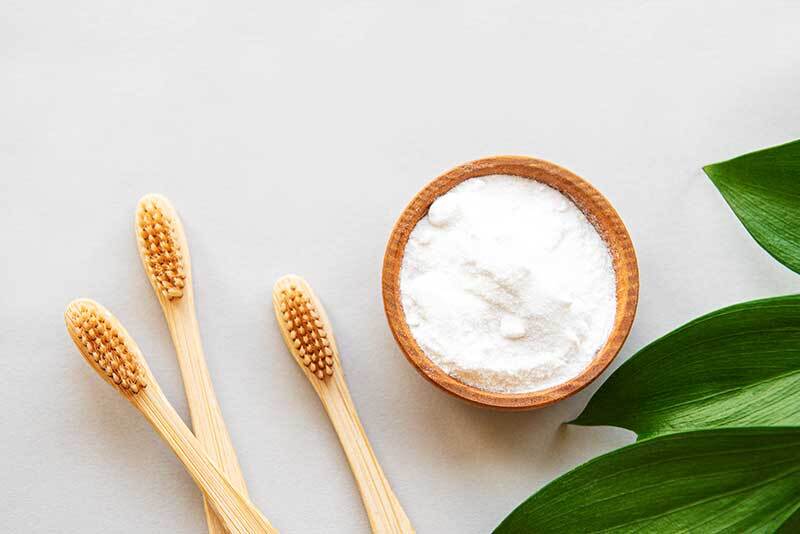
Baking soda is a mild abrasive that can remove stains from the teeth. In addition to having natural whitening properties, it can alkalize the mouth, preventing bacteria from growing. Various studies have shown that regular use of baking soda has reduced gums’ inflammation and improved oral health.
3. Using hydrogen peroxide
Hydrogen peroxide is an active ingredient in many whitening agents, and the concentration varies from very mild to high. Various whitening gels, pastes, and mouthwashes are commercially available for domestic use to whiten teeth.
Dental clinics use higher concentrations and supervise the whitening procedure under the dentist’s supervision. For personal use, consult your doctor first and avoid overdoing the whitening process as you may end up eroding your teeth.
4. Monitor your diet
Diet plays a vital role as certain fruits have specific ingredients that can whiten the teeth naturally. There is no particular research stating the effectiveness of these foods, but if you want to whiten your teeth without using harsh chemicals, you must try these foods. The exact time it takes for these foods to whiten teeth is not scientifically proven. The key to effective results is to consume them regularly.
Foods that help in teeth whitening
1. Strawberries
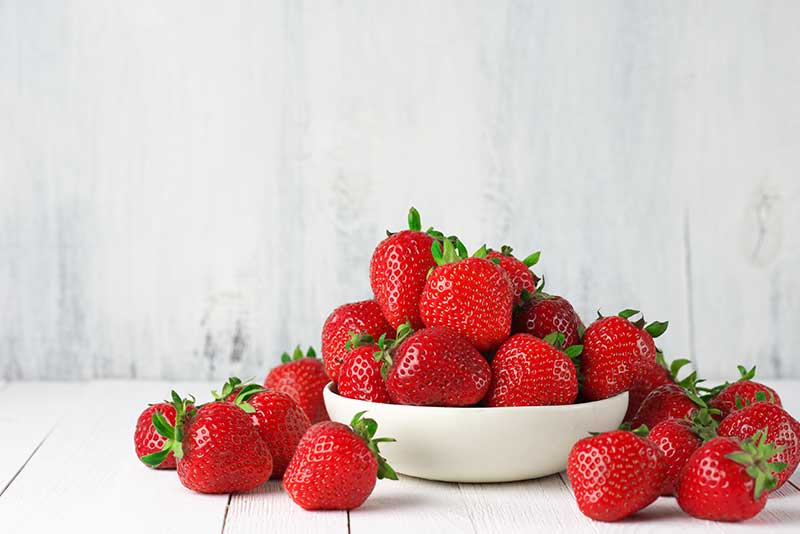
It contains malic acid that has bleaching properties and increases saliva production that naturally cleans your teeth.
2. Watermelon
As the fruit contains a higher concentration of malic acid than strawberries, and has a high fibre content, watermelon may be effective in removing stains from teeth.
3. Pineapple
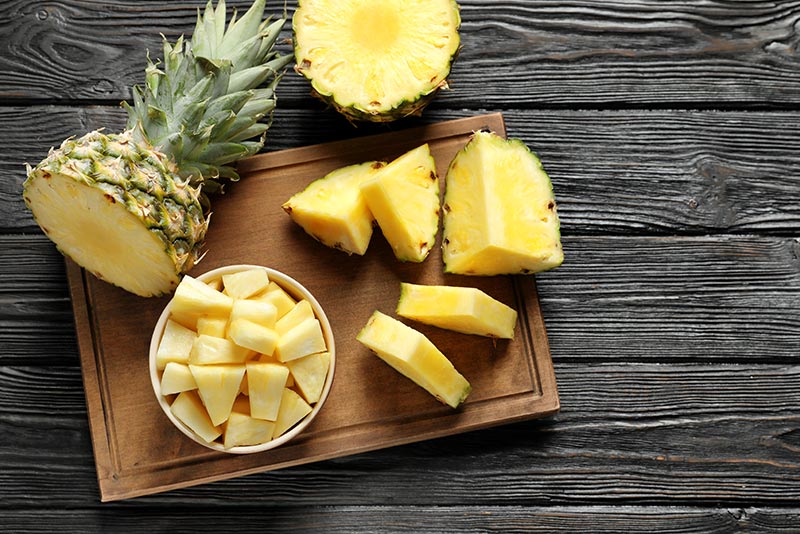
Our teeth are covered by a layer of pellicle that is nothing but a salivary protein. This pellicle attracts bacteria and can absorb pigments also. The pineapple has a proteolytic enzyme that breaks this pellicle.
4. Papaya

Papaya also has a similar proteolytic enzyme that helps eliminate bacteria and reduce plaque formation by destroying this pellicle.
Tips for keeping your teeth white
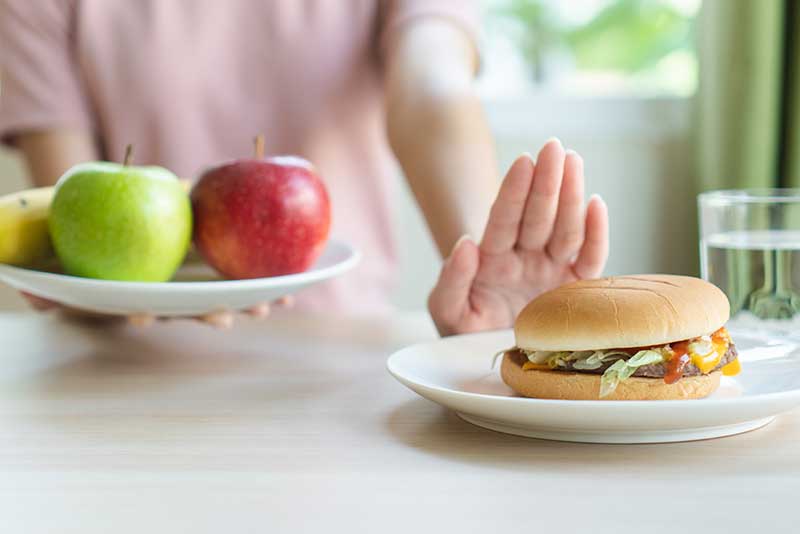
- Avoid food items and beverages that can stain your teeth. Any food items with acids and tannins can dull the sparkle of your smile. Take precautions while consuming carbonated drinks.
- Ensure you do not excessively consume tea, coffee, and other strongly stained food items like soya sauces. Make it a point that you rinse your mouth immediately after consuming these food items if it is unavoidable. Use a straw for drinking such heavily stained liquids to avoid direct contact with the teeth.
- If possible, brush and mouth rinse immediately after consuming strong-colored food items.
- Practice proper oral hygiene by brushing twice daily with the correct technique, which is one of the prominent tips for whitening teeth naturally at home. Brushing with horizontal scrubbing motion is the most common and detrimental technique as it may erode the enamel leading to the exposure of yellow dentin, causing tooth discoloration and sensitivity.
- Avoid smoking habits or chewing tobacco, as it may cause black discoloration of the teeth and gums.
- Get regular cleaning of your teeth done with your dentist to avoid plaque build-up.
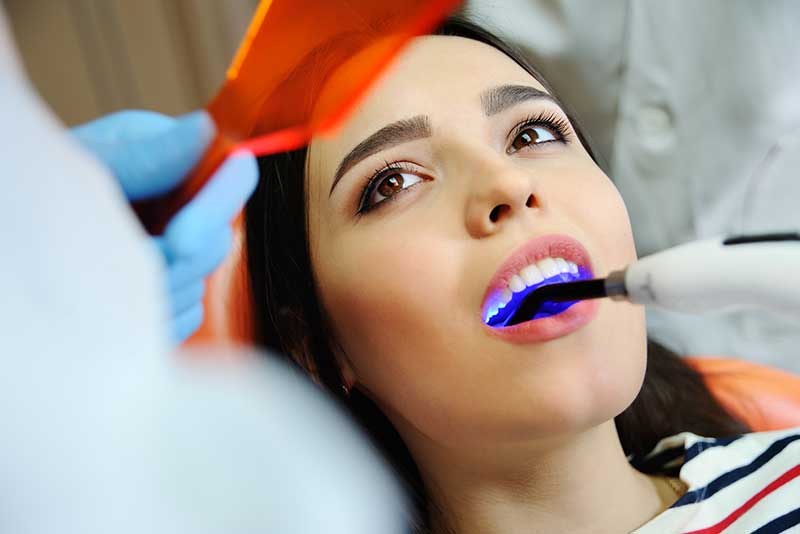
Conclusion
A smile is the best makeup you can wear and a perfect smile is incomplete without healthy teeth so make sure of good oral hygiene habits, you never know, you can light up a dark room with your smile only.
References: https://www.ncbi.nlm.nih.gov/pmc/articles/PMC5654187/
https://pubmed.ncbi.nlm.nih.gov/30409952/
https://pubmed.ncbi.nlm.nih.gov/33121984/

Priyanka Khurana Goyal is a prominent Indian figure renowned for her diverse accomplishments and contributions across various fields.. Read more


